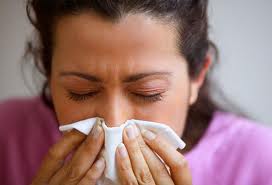 It is no wonder why the weight-loss industry is a $20 billion per year industry. Dieters spend money on diet books, diet drugs and weight-loss surgery. 108 million people in the United States are on diets and typically attempt four or five diets a year. 85% of dieters are women.
It is no wonder why the weight-loss industry is a $20 billion per year industry. Dieters spend money on diet books, diet drugs and weight-loss surgery. 108 million people in the United States are on diets and typically attempt four or five diets a year. 85% of dieters are women.
Some diets preach low-calorie, some are low-carbohydrate. Some allow for only eating grapefruit or cabbage soup. Some say it’s only about how much you eat and the amount of time spent exercising, while others say not all calories are created equal and it is about what we eat as well as how much of it. We are constantly bombarded by different information and different diets. No wonder we cannot keep the weight off.
A promising study published in the Journal of the American Medical Association may finally set the record straight. It found that a specific mix of carbohydrate, fat and protein might be ideal. It also suggested that not all calories are created equal, meaning that calories can have different effects on the body.
The study followed 21 adults ages 18 through 40 for four years to determine the effects of various diets on the ability to burn calories following weight loss. At the start of the study, the participants had a BMI over 27, which is considered overweight or obese. The participants were originally placed on a diet to lose 10%-15% of their body weight. After the initial weight loss, researchers placed the participants on three different diets in a random order each for four weeks at a time. All diets maintained the same total number of calories. However, they did differ in their carbohydrate, fat and protein content.
The low-fat diet required that 60% of calories came from carbohydrates, 20% from fat and 20% from protein. The low-glycemic diet required that 40% of calories be derived from carbohydrates, 40% from fat and 20% from protein in order to prevent spikes in blood sugar. The very low-carbohydrate diet (“Atkins”) required that 10% of calories came from carbohydrate, 60% from fat and 30% from protein.
Researchers measured participants’ energy expenditure as well as other aspects of metabolism and concluded that the total number of calories burned daily differed with each diet. Researchers also studied hormone levels and metabolic measures concluding that they too varied by diet.
On average the very-low carbohydrate diet burned calories most efficiently with participants burning 3,137 calories daily. The low-glycemic diet burned 2,937 calories per day, 200 less than the very-low carbohydrate. The low-fat diet burned 2,812 calories daily.
While researchers did conclude that it improved metabolism the best, don’t switch to the very-low carbohydrate diet just yet. The participants showed higher levels of risk factors for diabetes and heart disease, including the stress hormone cortisol.
The low-glycemic diet resulted in only a 200 calorie difference and showed similar benefits to the very-low carbohydrate diet, with less negative effects. A low-glycemic diet consists of less-processed grains, vegetables and legumes. According to researchers, this may be the best diet for both long-term weight loss and heart disease prevention when coupled with exercise.
A low-glycemic index diet emphasizes foods based on how they affect blood sugar levels. Foods, specifically carbohydrates since they have the most effect on blood sugar, are given a score between 0 and 100. High scores of 70 and up include white and brown rice, white bread, white skinless baked potato, boiled red potatoes and watermelon. Medium scores between 56-69 include sweet corn, bananas, raw pineapple, raisins and some ice creams. Examples of low scoring foods of 55 and under include raw carrots, peanuts, raw apple, grapefruit, peas, skim milk, kidney beans and lentils.
The diet does not require counting carbs, counting calories or reducing portion sizes. It only directs dieters to the right kind of carbohydrates in order to keep blood sugar levels balanced. Specifically, lower glycemic diets are digested less rapidly by the body, which raises the blood sugar in a regulated, balanced way; whereas higher glycemic foods and beverages are digested more rapidly causing a blood sugar spike followed by a drastic decline. Since low-glycemic index foods are digested more slowly, they remain in the digestive tract longer, potentially controlling appetite and hunger. This can also reduce the risk of insulin resistance.
The study shows that a low-glycemic diet can work for long-term weight-loss, as it is easily sustainable because whole food groups are not removed. Furthermore, it may reduce the risk of serious diseases such as diabetes and cardiovascular disease.
Sources:
Weight-Loss Stats: http://abcnews.go.com/Health/100-million-dieters-20-billion-weight-loss-industry/story?id=16297197#.UBBfZo7p7ao
NIH: http://www.nih.gov/researchmatters/july2012/07162012weight.htm
Mayo Clinic on the Low-Glycemic Diet: http://www.mayoclinic.com/health/glycemic-index-diet/MY00770

 Although only 3/4 's through 2012, this year has already seen a remarkable number of political men make public assumptions, gaffes and decisions surrounding women’s health that are, politely speaking, just embarrassing.
Although only 3/4 's through 2012, this year has already seen a remarkable number of political men make public assumptions, gaffes and decisions surrounding women’s health that are, politely speaking, just embarrassing. For years we criticized heart researchers for not including women in the early studies that recommended aspirin to prevent heart disease. We asked: How can you recommend aspirin in women when all the studies took place in males! In 2007, after additional studies that included females, the American Heart Association released guidelines for the CVD preventive care in women including aspirin. Their recommendations:
For years we criticized heart researchers for not including women in the early studies that recommended aspirin to prevent heart disease. We asked: How can you recommend aspirin in women when all the studies took place in males! In 2007, after additional studies that included females, the American Heart Association released guidelines for the CVD preventive care in women including aspirin. Their recommendations: The U.S. can learn from Mexico's recent efforts at health reform, especially as it relates to transferring care from specialists back to primary care physicians, researchers said.
The U.S. can learn from Mexico's recent efforts at health reform, especially as it relates to transferring care from specialists back to primary care physicians, researchers said. Those with chronic or acute injury may not be confined to rehabilitation. Massage therapy may be beneficial as well for those suffering from chronic or acute injuries. Benefits include decreased pain and anxiety, increased endorphins, decreased insomnia, less muscle spasms, decreased tension headaches, and an increased sense of well-being and relaxation.
Those with chronic or acute injury may not be confined to rehabilitation. Massage therapy may be beneficial as well for those suffering from chronic or acute injuries. Benefits include decreased pain and anxiety, increased endorphins, decreased insomnia, less muscle spasms, decreased tension headaches, and an increased sense of well-being and relaxation. A clear majority of MedPage Today readers do not want hospitals to lock up infant formula as a way to encourage new moms to breastfeed.
A clear majority of MedPage Today readers do not want hospitals to lock up infant formula as a way to encourage new moms to breastfeed. According to a recent study, exercising or practicing meditation may be effective in reducing acute respiratory infections. Acute respiratory infections, which are caused by influenza and other viruses, are very common illnesses and account for millions of doctor visits and lost school and work days each year. Previous research has suggested that enhancing general physical and mental health may offer protection against these illnesses. Findings from this
According to a recent study, exercising or practicing meditation may be effective in reducing acute respiratory infections. Acute respiratory infections, which are caused by influenza and other viruses, are very common illnesses and account for millions of doctor visits and lost school and work days each year. Previous research has suggested that enhancing general physical and mental health may offer protection against these illnesses. Findings from this It is no wonder why the weight-loss industry is a $20 billion per year industry. Dieters spend money on diet books, diet drugs and weight-loss surgery. 108 million people in the United States are on diets and typically attempt four or five diets a year. 85% of dieters are women.
It is no wonder why the weight-loss industry is a $20 billion per year industry. Dieters spend money on diet books, diet drugs and weight-loss surgery. 108 million people in the United States are on diets and typically attempt four or five diets a year. 85% of dieters are women. Women who are obese before they become pregnant may be putting their child at a disadvantage. New research shows that reading and math scores for kids ages 5 to 7 were lower if the mother was obese before she got pregnant. Obesity can alter how a baby receives nutrients and grows inside the womb.
Women who are obese before they become pregnant may be putting their child at a disadvantage. New research shows that reading and math scores for kids ages 5 to 7 were lower if the mother was obese before she got pregnant. Obesity can alter how a baby receives nutrients and grows inside the womb. Coffee has been widely linked to an array of health benefits including: decreased occurrences of type-2 diabetes; lower risks of Parkinson’s disease; lower risk of colorectal cancer; lower mortality rates; decreased skin cancer risk; and decreased rates of heart failure. Some studies have deemed coffee unhealthy, but according to others, this claim proves inconsistent and improvable. There are disadvantages to drinking coffee such as irritability and insomnia, but in general, coffee proves beneficial. In honor of National Coffee Month, pour yourself a cup or two and reap the following benefits.
Coffee has been widely linked to an array of health benefits including: decreased occurrences of type-2 diabetes; lower risks of Parkinson’s disease; lower risk of colorectal cancer; lower mortality rates; decreased skin cancer risk; and decreased rates of heart failure. Some studies have deemed coffee unhealthy, but according to others, this claim proves inconsistent and improvable. There are disadvantages to drinking coffee such as irritability and insomnia, but in general, coffee proves beneficial. In honor of National Coffee Month, pour yourself a cup or two and reap the following benefits.